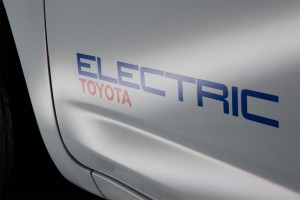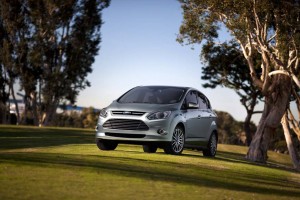
Demand for lithium-ion batteries - for vehicles like the upcoming Toyota RAV4-EV - is expected to jump 600% by 2015, and another 500+% by 2020.
A new study finds reason to be charged up about lithium-ion batteries. It anticipates sales of the technology will grow by 600% between now and 2015 as more and more makers bring out hybrids, plug-ins and battery-electric vehicles.
The report, by the Roland Berger consultancy, anticipates sales could then surge from $9 billion to $50 billion worldwide by 2020.
The new study, meanwhile, anticipates that while a growing number of companies are getting into the automotive lithium-ion game, the market will be increasingly dominated by five companies, including American A123.
Until recently, automakers like Toyota – with its popular Prius – have relied on time-tested nickel-metal hydride batteries and that has meant that lithium suppliers were largely focused on consumer electronics markets, such as cellphones and laptop computers and, more recently, devices like the wildly popular Apple iPad.
But automakers are rapidly migrating to more advanced LIon systems in conventional hybrids – the first to market was the lithium-powered Hyundai Sonata Hybrid – to take advantage of more compact packaging, lighter weight and increased energy density. The ramp-up of automotive demand will only accelerate as new plug-in hybrids, extended-range electric vehicles, and battery-electric vehicles, or BEVs, go into production.

Ford will offer only lithium-powered versions of its C-Max people-mover in the U.S., a plug-in and a pure battery-electric version.
As a result, cars and light commercials will grow to account for more than 80% of lithium-ion battery sales by 2015, according to Roland Berger, which has offices in Munich and suburban Detroit. By mid-decade, the consultancy estimates 2.5 million hybrids, 300,000 plug-in hybrids and 500,000 electric vehicles will be coming off production lines each year.
“We expect the global market for Li-ion batteries to leap from the current volume of USD 1.5 billion to almost USD 9 billion in 2015,” says Wolfgang Bernhart, Partner at Roland Berger Strategy Consultants. “In our best-case scenario, worldwide market volume may even grow to over USD 50 billion by 2020.”
Bernhard also suggests that, “As sales surge, Japanese and Korean carmakers will be doing everything they can to establish themselves as the leading global providers of alternative drive technologies.
The downside of the rapid growth is that it likely to be accompanied by substantial overcapacity, meaning there could be twice as many batteries as buyers require, which should set the stage for consolidation.”
And for a much-anticipated plunge in prices. At the beginning of the decade, a LIon pack typically cost about $1,000 per kilowatt-hour. By some estimates that could dip to as little as $200 per kWh by 2010.
The five front-runners in lithium-ion batteries – AESC, LG Chem, Panasonic/Sanyo, A123 and SB LiMotive – can, between them, be expected to control almost 80 percent of the market by 2015.
Who dominates the market for batteries will depend, at least in part on what segment of the vehicle market you’re talking about.
In the case of electric-drive buses, China will certainly be a front-runner in coming years. The Roland Berger experts estimate that around 80% of LIon batteries for buses will be sold in China by 2015.
“This is due to the highly ambitious plans of the Chinese government. It is targeting investment at growth industries and is also keen to improve air quality in the cities,” explains Thomas Wendt, co-author of the study.
“By contrast, the Chinese electric car market will initially see slower growth than Western markets,” adds Bernhart. “Above all, that’s due to the changed priorities of the Chinese government. As a first step, it’s focusing on hybrid vehicles, with pure electric drives or plug-ins taking second place for a while.”
Paul A. Eisenstein contributed to this report.
